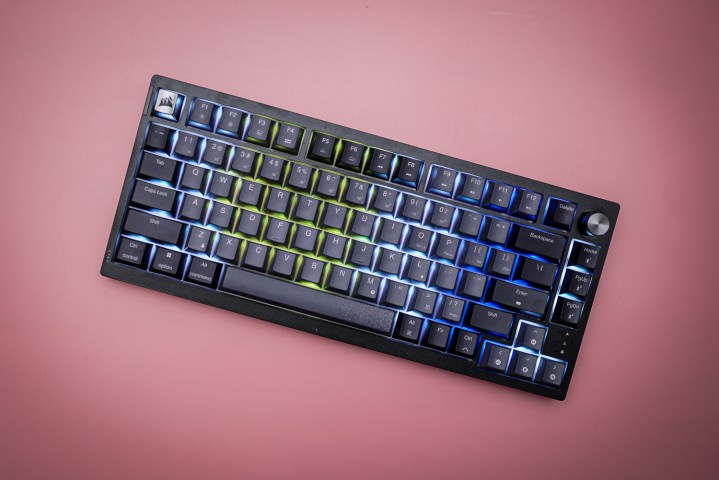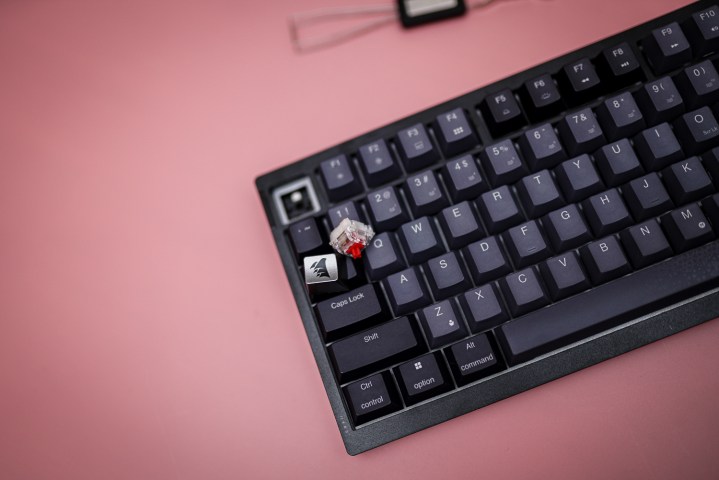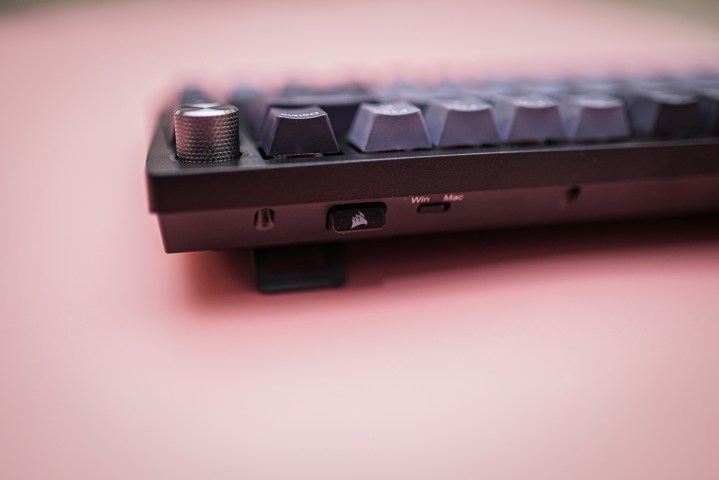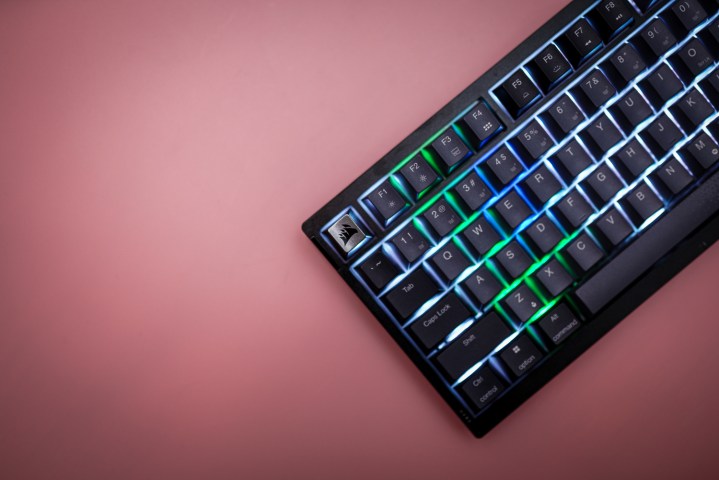
I’ve had a contentious relationship with Corsair keyboards over the last couple of years. The landscape for mechanical keyboards has been changing, and Corsair (along with brands like SteelSeries and Razer) felt behind the curve, selling the same standard mechanical keyboards for the same high prices that were available years ago.
That’s changing with the Corsair K65 Plus Wireless.
.
A bit of board foam, wider feature support, and a reasonable price show that Corsair is getting serious about competing with the enthusiast class of keyboards we’ve seen from Asus, Glorious, and more recently, HyperX. There’s still room to grow here, but the K65 Plus is a step in the right direction, and it’s a keyboard that’s easy to recommend among other mainstream options.
A little foam goes a long way

The main thing that sets the K65 Plus apart is board foam. That may feel silly to say, but a bit of dampening can transform the sound and feel of a keyboard, which is something that was on full display with the Asus ROG Strix Scope II. There are two layers of foam here, one between the top plate and PCB and another between the PCB and bottom frame.
It automatically — almost magically — makes the K65 Plus sound and feel like a much more premium keyboard. The harsh plastic clack of most gaming keyboards is absorbed, and the response of typing feels much more smooth.
It’s a monumental leap forward for Corsair, making the Corsair K70 RGB Pro feel like a toy by comparison. That comparison brings up a lot of interesting context, too. The K70 RGB Pro launched at $160, which is the same price that Corsair is asking for the K65 Plus. This one not only supports wireless, but it also comes with a much better typing experience.
I appreciate the price, but one premium feature the K65 Plus Wireless misses out on is a gasket mount, which you’ll find on keyboards like the Asus ROG Azoth. It uses a top mount, placing the switches directly on the top plate. A gasket mount allows the plate to move, providing a bit of give when typing.
A gasket mount would easily make this the best mainstream keyboard on the market, though it makes sense that Corsair would stick with a top mount given the $160 price tag.
Out of the box

Outside of the mount, the K65 Plus Wireless includes Corsair’s MLX Red switches, which come lubricated from the factory, as well as a set of dye-sub keycaps. The keyboard itself is made out of plastic and is shockingly light at just over 2 pounds, but Corsair still includes a steel switch plate.
It’s a solid experience out of the box. The switches provide a standard linear feel that pairs well with the sound dampening, and the keycaps are thick with clear legends. Double-shot keycaps have better longevity, though I suspect it will be many years before the legends start wearing off on these caps.

You don’t have to settle for Corsair’s included switches and keycaps, though. This keyboard supports hot-swappable switches with either a three- or five-pin layout. I put in some Drop Holy Panda X switches, along with a set of keycaps I’ve had around for a while, and it completely transformed the keyboard. The keycaps changed the sound of typing, and the heavy switches felt perfect for the way I slam on my keyboard while typing.
Using this same setup in a more robust frame like the GMMK Pro would provide a superior typing experience, but it’s also a lot more expensive. The magic trick of the K65 Plus Wireless is its ability to balance a mainstream price with just enough enthusiast features to give you a taste of the wider world of mechanical keyboards.
Mainstream features

The K65 Plus Wireless has some key advantages over more expensive enthusiast options, too, and it’s right there in the name — wireless. You get three connection modes here. There’s 2.4GHz wireless through an included adapter, a USB-C wired connection, and Bluetooth. The Bluetooth mode is especially useful, allowing you to connect three devices simultaneously and switch between them with dedicated buttons.
The keyboard could stop there, and it would already have an edge, but Corsair goes further. Along with a dedicated switch for the three connection modes, there’s a switch for Windows and Mac on the back of the keyboard. The keyboard supports Mac, and Corsair even includes Windows and Mac legends on some of the keycaps so you can switch back and forth.
If that wasn’t enough, you can even connect the keyboard to your phone through Bluetooth, and to a PlayStation 4, PlayStation 5, Xbox One, or Xbox Series X with the 2.4GHz adapter or a cable. You can use this keyboard with just about any device, which is huge.
The iCue difference
As with any Corsair peripheral, you’re getting iCue integration here, too. While iCue itself is very dense, it unlocks a lot of functionality on the K65 Plus. You get per-key RGB lighting, macros, and the ability to reassign any of the keys to different inputs or commands, such as launching an application.
None of that is new, but what I appreciate so much about the K65 Plus is how much you can do without iCue. There are 10 lighting assignments built into the keyboard, and you can even record and store macros in the keyboard’s memory without ever installing iCue.

The volume dial is by far the most useful feature, though. As you might expect, there’s a dial to control volume, which you can press to mute or unmute your system. With the Function and arrow keys, though, you can transform it into a multipurpose dial. It can scroll webpages, control your lighting brightness, and even zoom in and out.
Corsair gets a lot of mileage out of this dial, allowing you to interact more with the keyboard and less with the software. The only downside here is that the parameters the dial can control are set. You can’t reassign them or bind the dial to other commands in iCue, though you can disable the functions if there are only a few that matter to you.
A big jump

Although it’s been a rocky couple of years for Corsair’s keyboards, the K65 Plus Wireless is proof that the brand still has life in it yet. The K65 Plus Wireless is a huge step forward in terms of the sound and feel of a Corsair gaming keyboard, and it delivers a host of premium features at a price that more enthusiast options struggle to hit.
A chunk of the price goes toward Corsair’s robust software support, however. If all you’re concerned about is the typing experience, there are cheaper options like the Rainy 75 and Keychron Q1 that provide a superior typing experience. Among its contemporaries like Razer, Steelseries, and Asus, however, Corsair is finally doing something to stand out.
Editors' Recommendations
- It’s time to stop ignoring the CPU in your gaming PC
- The Asus ROG Ally just got a game-changing update
- This is the best gaming keyboard I’ve ever used — and you’ve never heard of it
- Intel just boosted gaming performance by up to 155%
- This limited-edition SteelSeries keyboard could have been so much better




